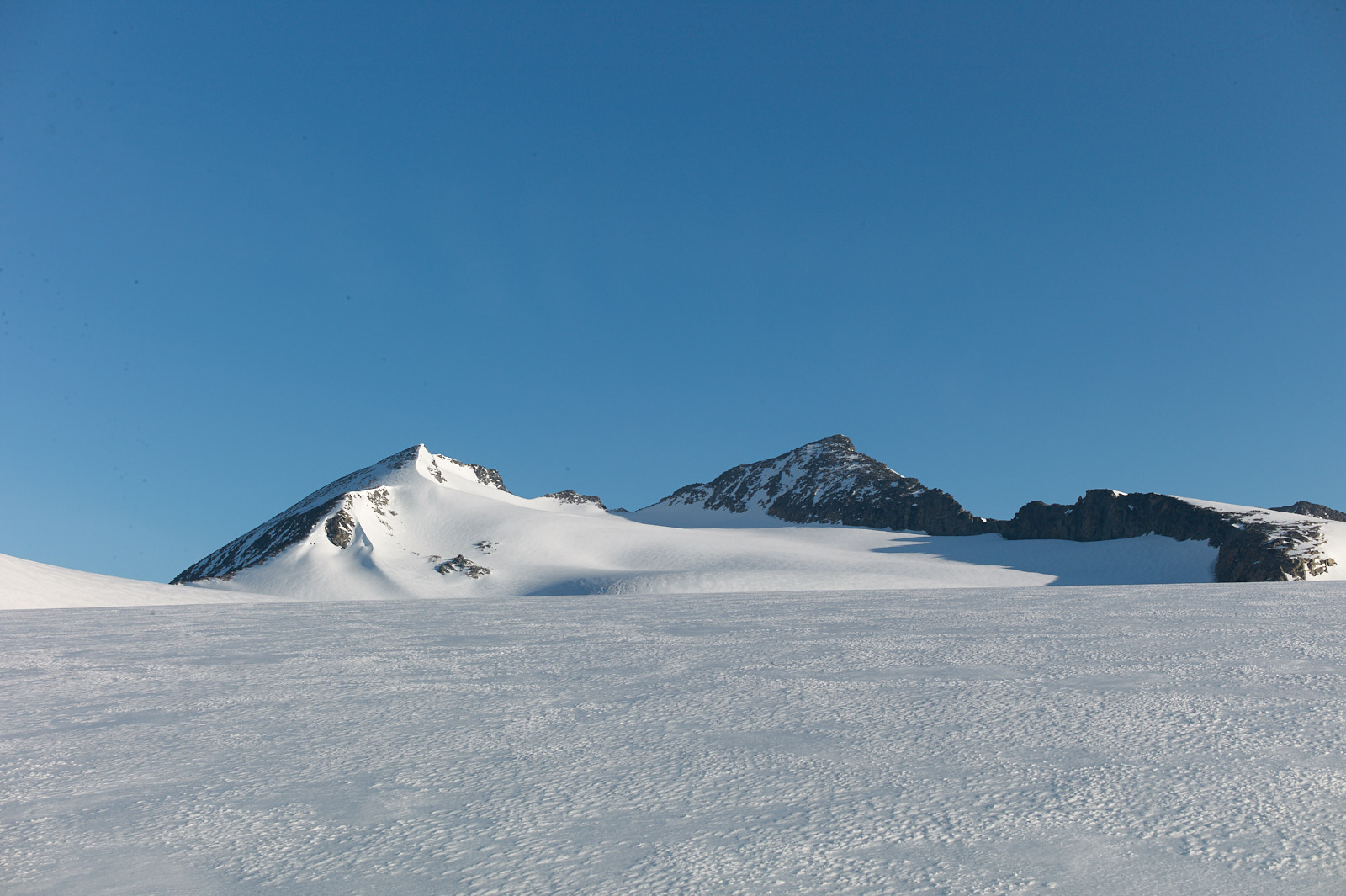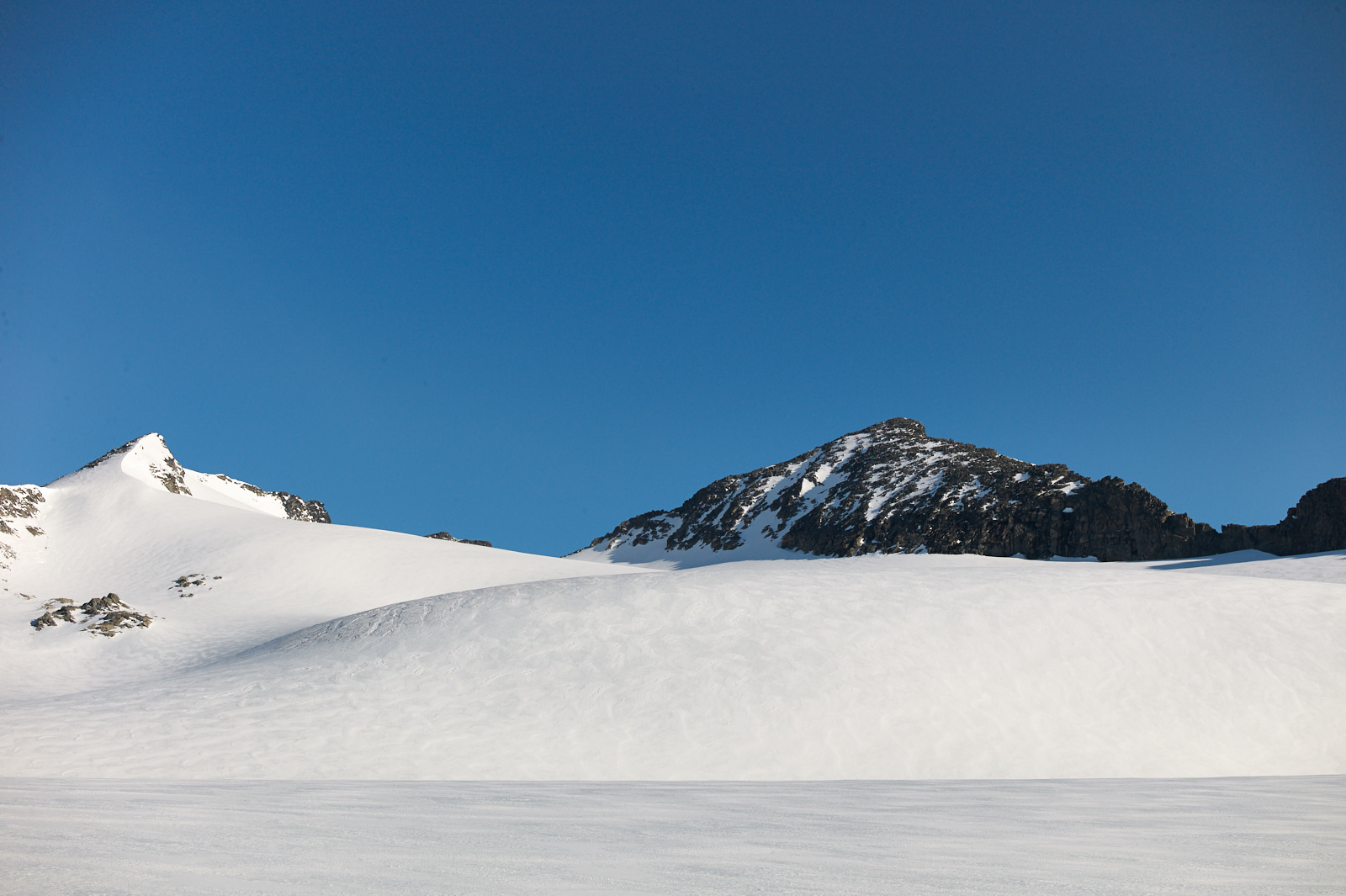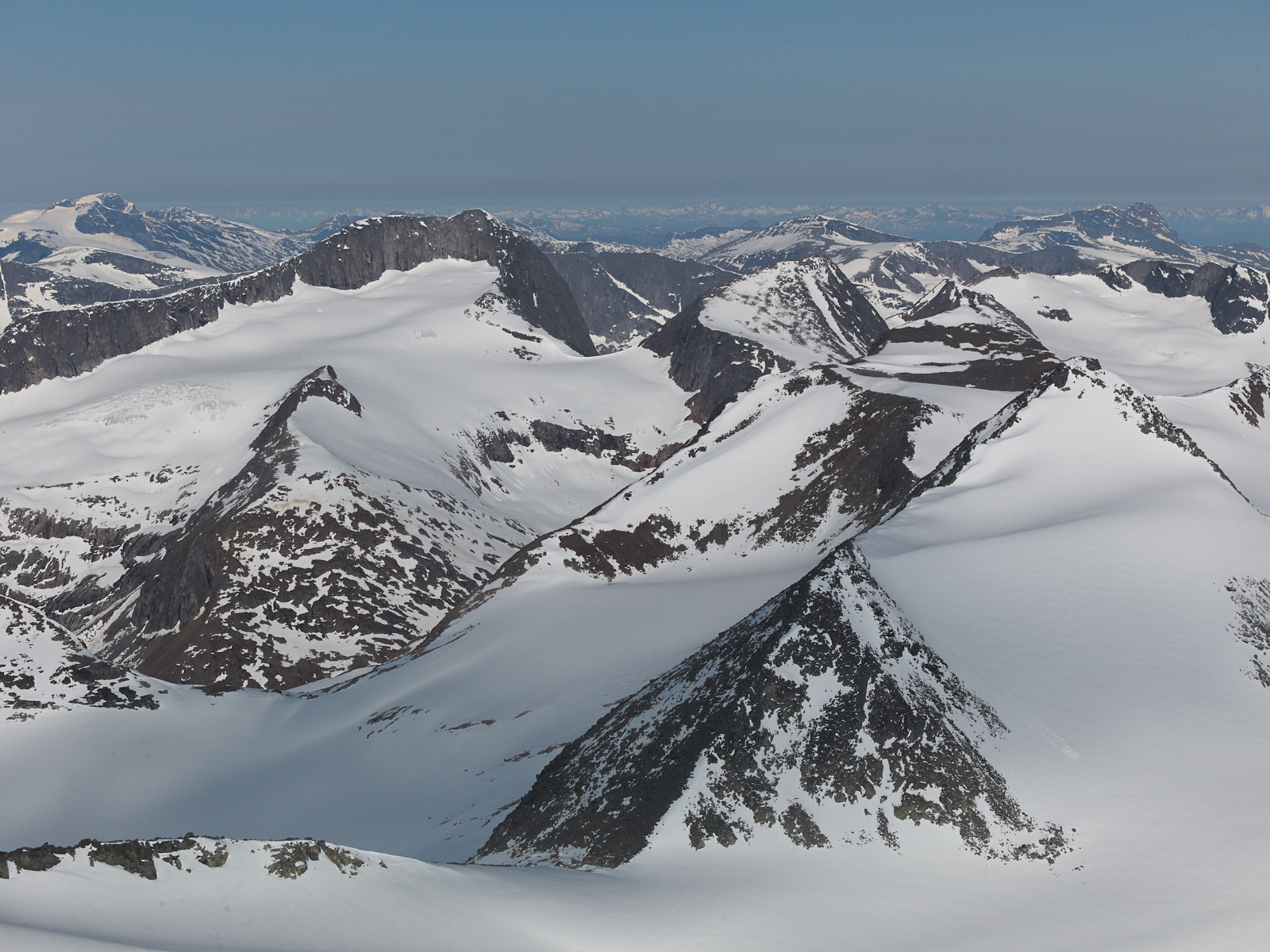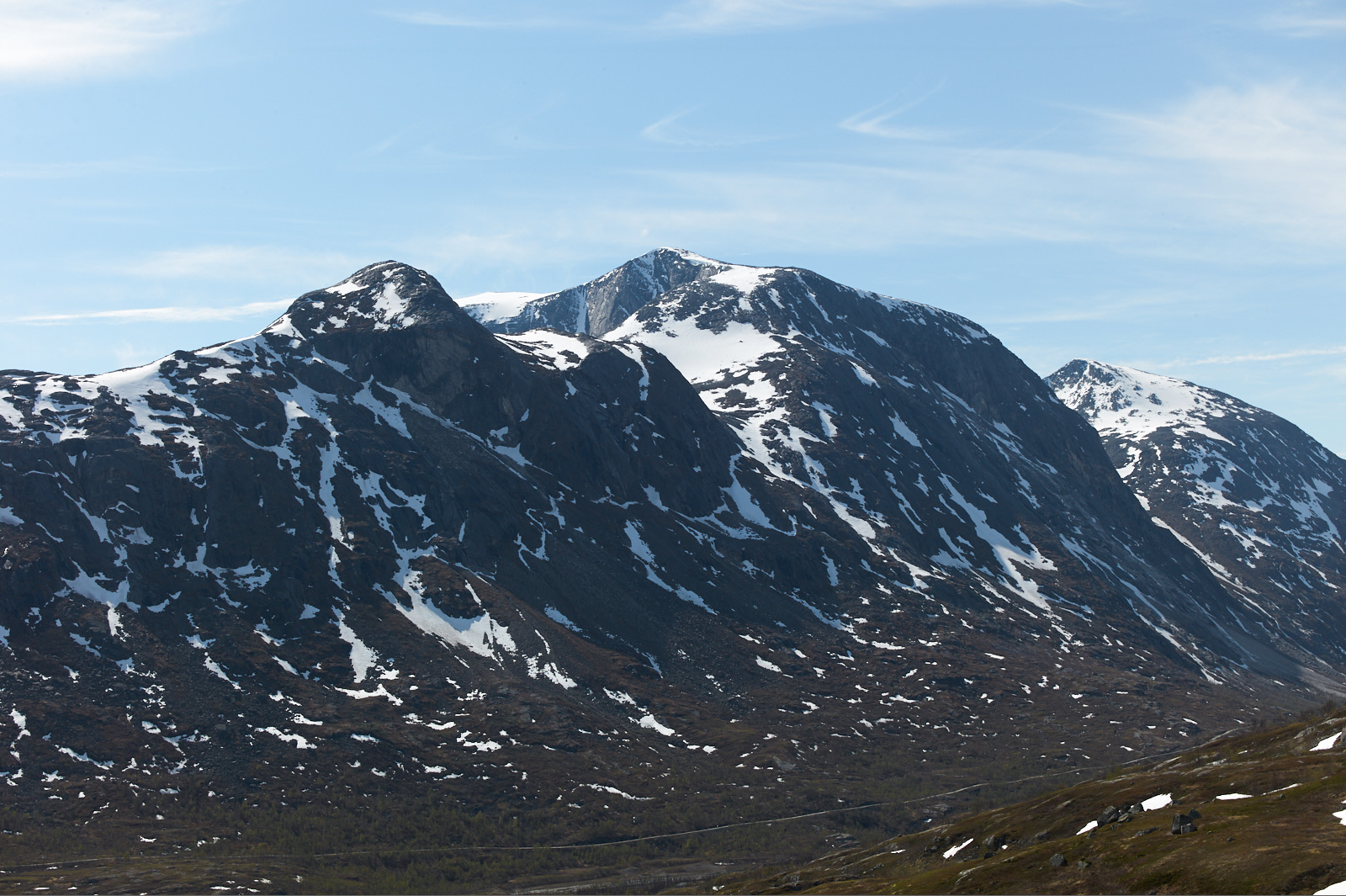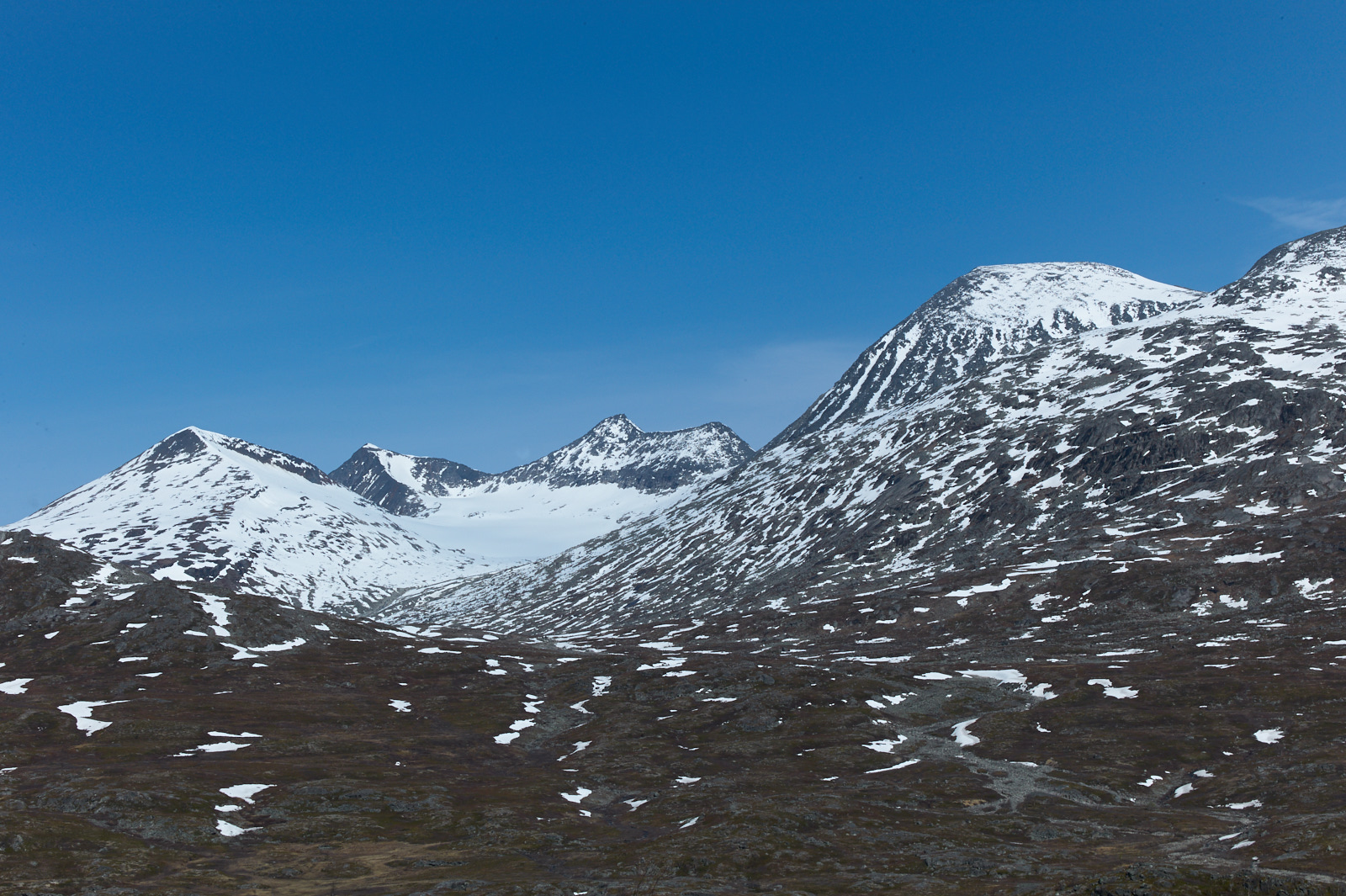Ski conditions on Storsteinsfjellet (1893m), SE glacier & W ridge
Storsteinsfjellet SE glacier & W ridge
I skied Storsteinsfjellet (1893m) in Skjomen (Narvik area) today via the SE glacier. The Norddalen road is open and snow-free until the end. Snow cover starts on average at ca. 930-950m. There had been some decent freezing after weeks of above-zero temperatures, and the snow surface was frozen in the morning (4:00).
I measured snow heights between 170cm and 260cm on the glacier. That should give another few weeks of skiing for those willing to carry skis. Some crevasses and ice on the convex rolls are visible.
The west ridge was not trivial. I crossed the south face on snow for a bit and then regained the ridge to avoid the big blocks and steps on the lower section. Rocks on the north facing side of the ridge had a thin ice cover. Using a rope here is recommended.
The south facing ski descent from the summit is still possible, and provided good skiing. During the descent of the SE glacier, the snow surface consisted of “sticky” snow (rapid warming of a few mm recent snow) on the upper section and nice melt-freeze snow on the lower of the glacier.
Avalanche concerns are limited to small wet snow sluffs in steep, isolated terrain.
I also did a quick run up to Lossi Hytta. Not much skiing in the vicinity of the hut anymore, except Storsteinsfjellet (the descent towards Lossi may be the more attractive run than the flat SE glacier) and possibly the distant E-NE facing slopes in the Rienatčohkka/Huinnarčohkka area (see photos). Ippočohkka looked thin, the ridge is largely snow-free, and so is lower section of Durmålstinden (see photos).
From what I could see, Storsteinsfjellet west and main summits are probably the best options at the moment for getting in some last turns this season. The north and east aspects also looked good, but I do not know how the snow cover is on the approach.

